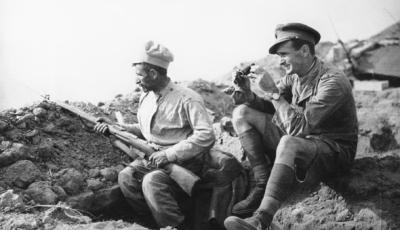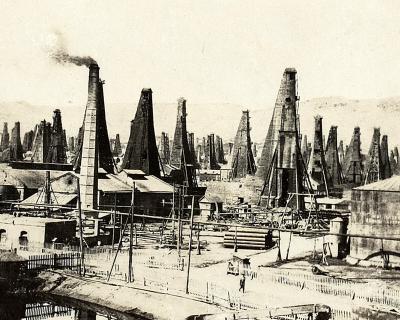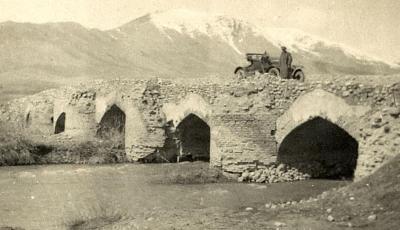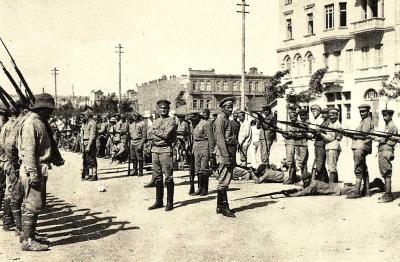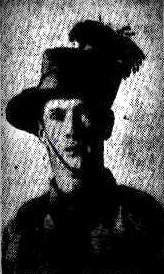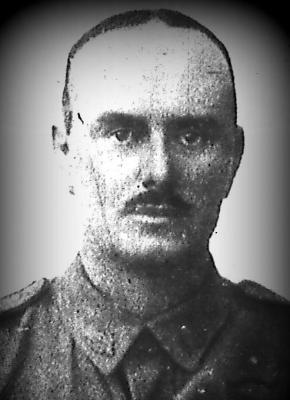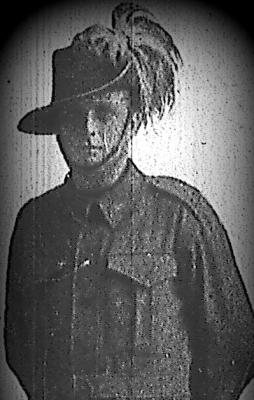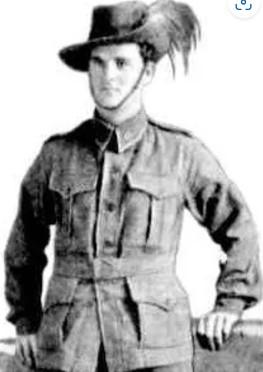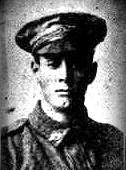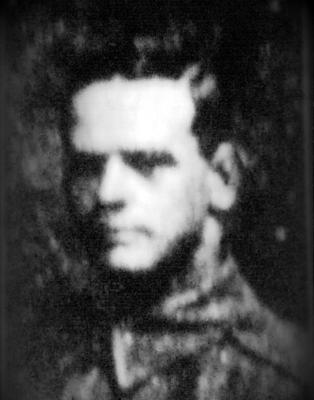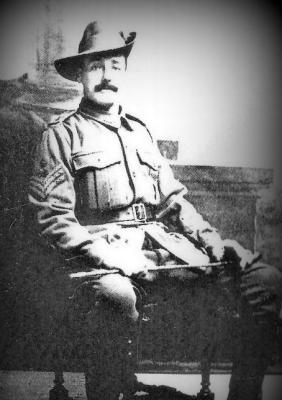World War 1, Dunsterforce, Mesopotamia, Basra, 1918
Dunsterforce, officially called the British Military Mission to the Caucasus, was a secret force of 450 to 1,000 imperial soldiers commanded by Major-General Lionel C. Dunsterville. Its mission was to safeguard the immense oil installations at Baku from the Ottomans and the Germans, while organizing local groups of Armenians, Georgians, and anti-Bolsheviks to safeguard the railways and approaches to Afghanistan and India.
Dunsterforce was formed in December 1917, to organise local replacements for the Russian Caucasus Army, that had collapsed in the aftermath of the Russian Revolution, the Bolshevik October Revolution and the Armistice of 15 December 1917. About 100 officers and 250 NCOs were raised by quota from the various national and Dominion contingents in France, the largest number coming from the Australians. From 12 to 20 officers and about twenty NCOs each, was requested from the First Australian Imperial Force (AIF) and the Canadian Corps, twelve officers and about ten NCOs from the New Zealand Expeditionary Force (NZEF) and several South Africans.
A feature of the force was the fleet of vehicles including armoured cars and Model Ts which in spite of the lack of logistic support, served the force well.. After many adventures, successes and disappointments from Basra to Baku, the War Office disbanded Dunsterforce on 22 September 1918. Most of the surviving men returned to their original units.
Details
Details
Open in Google Maps
Nearest geotagged records:
Australian Army Museum of Western Australia
Australian Army Museum of Western Australia
More items like this
Other items from Australian Army Museum of Western Australia
- World War 1, Dunsterforce, Caucasus, Baku, 1918
- Starting Cannon - America's Cup Defence, Fremantle,1986/87
- World War 1, Australia, Western Australia, 139 CUMMING, 10 Light Horse
- World War 1, Australia, Western Australia, 138 MOORE, 10 Light Horse
- World War 1, Australia, Western Australia, 132 ROSKAMS, 10 Light Horse
- World War 1, Australia, Western Australia, 131 RUSSELL, 10 Light Horse
- World War 1, Australia, Western Australia, 130 ROSS, 10 Light Horse
- World War 1, Australia, Western Australia, 125 McRAE, 10 Light Horse
- Trench Raider Club - 1917
- World War 1, Australia, Western Australia, 124 MURRAY, 10 Light Horse
- World War 1, Australia, Western Australia, 123 McJANNET, 10 Light Horse
- World War 1, Australia, Western Australia, 122 McWHINNEY, 10 Light Horse

Scan this QR code to open this page on your phone ->

